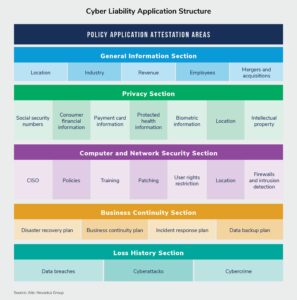Cyber Insurance in India is becoming essential in our digital-first world. With cyberattacks on the rise, this in-depth, ~1000-word guide helps you understand:
What cyber insurance covers
Why it matters
How to choose and apply
Benefits & real examples
FAQs, helpful visuals, and data
 What is Cyber Insurance in India?
What is Cyber Insurance in India?
Cyber insurance protects individuals and businesses from financial losses due to cyber incidents like:
Data breaches
Ransomware attacks
Phishing scams
Business interruption
Legal, forensic, and regulatory costs
 Types of Coverage
Types of Coverage
| Type | Coverage |
|---|---|
| First-party | Data recovery, forensic costs, business interruption |
| Third-party | Client lawsuits, privacy liability, regulatory fines |
 Why Cyber Insurance in India Is Crucial in 2025
Why Cyber Insurance in India Is Crucial in 2025
Surge in Cyber Threats
CERT‑In recorded 1.39 million incidents in 2022—India spends ₹759 crore on cybersecurity moneycontrol.com+1en.wikipedia.org+1.
Market Growth & Innovation
Market size hit USD 582 million in 2024; projected to grow at a CAGR of 29% to USD 6.9 billion by 2033 impriindia.com+6imarcgroup.com+6theweek.in+6.
Sachet plans for individuals now available at ₹3/day moneycontrol.com+1theweek.in+1.
Regulatory Push
IRDAI promoting tailored cyber products; FM urging insurers to innovate imarcgroup.com+7moneycontrol.com+7timesofindia.indiatimes.com+7.
SEBI, RBI, DPDP Act require robust cyber resilience m.economictimes.com+15moneycontrol.com+15bajajallianz.com+15.
Ransomware & AI Threats
Ransomware‑as‑a‑Service (RaaS) calls for ransom coverage; insiders use AI to assess risk and claims cybertechnologyinsights.com+4compassitc.com+4linkedin.com+4.
 Trends & Challenges
Trends & Challenges
-
Ransomware coverage is top priority
-
AI-driven underwriting provides real-time risk evaluation
-
Tighter policy conditions: must have MFA, EDR, secure supply chains
-
Supply-chain focus: Insurers require third-party risk assessments
-
Premiums are rising rapidly—expected to further increase until 2026
Who Should Buy Cyber Insurance?
Enterprises: BFSI, healthcare, ed-tech, e-commerce—most frequent claimants .
SMEs & startups: now accessible through sachet plans .
Individuals: for identity theft, financial fraud, cyberbullying protection
How to Apply for Cyber Insurance in India
Step 1: Assess Your Risk
-
Audit cybersecurity hygiene: MFA, EDR, secure backups, staff training
Step 2: Choose a Provider
-
Compare options: HDFC ERGO, Tata AIG, Bajaj Allianz, SBI General, ICICI Lombard
Step 3: Security Evaluation
-
Most insurers mandate baseline controls: MFA, antivirus, GDPR-like compliance, third-party audits .
Step 4: Complete Application
-
Provide business details, risk posture, survey findings; select coverage & add-ons.
Step 5: Pay Premium
-
Premiums calculated based on coverage amount, risk posture, industry.
Step 6: Issue & Adhere
-
Receive policy documents; ensure renewals, security upkeep, and training.
Step 7: Claim Process
-
Notify insurer within 24 hrs
-
File FIR, report to CERT‑In
-
Engage forensic/legal team
-
Submit documents for review & reimbursement
 Real-World Example
Real-World Example
A Fintech SME:
Implements MFA, EDR, and cyber awareness
Compares quotes from Tata AIG & HDFC ERGO
Buys ₹10 lakh limit policy
Ransomware hits; pays ₹2 lakh ransom
Forensics, legal & reputational costs covered
Business resumes with minimal downtime
 What Cyber Insurance in India Covers (in detail)
What Cyber Insurance in India Covers (in detail)
| Coverage Type | Examples Included |
|---|---|
| Data Breach | Hacking, email leaks, data exposure |
| Ransomware | System lockouts, ransom demands, crypto losses |
| Identity Theft | Credit fraud, fake social accounts |
| Cyberbullying | Harassment, defamation, mental trauma support |
| Social Engineering | Phishing, BEC scams, fraud transfers |
| Business Interruption | Downtime compensation, revenue loss |
| Reputation Damage | PR services, brand clean-up |
| Legal & Regulatory | GDPR, DPDP, IT Act violations and penalties |
 How Does Cyber Insurance Actually Work?
How Does Cyber Insurance Actually Work?
Once you purchase a cyber insurance policy, here’s what happens behind the scenes:
-
Risk Profiling – The insurer assesses your IT security controls (firewalls, MFA, backups, awareness programs).
-
Premium Calculation – Based on risk level, industry, and coverage amount.
-
Policy Period – Most policies are valid for 1 year, with renewal reminders.
-
Post-Incident Help – You get access to cyber forensic experts, legal consultants, and PR support.
-
Claim Payout – Once validated, you receive financial compensation or direct vendor payments.
 FAQs on Cyber Insurance in India
FAQs on Cyber Insurance in India
Q1. Is it mandatory?
No, but SEBI and RBI are urging regulated entities to fortify cyber resilience
Q2. How soon can a claim be made?
Typically within 8–12 hours post incident detection
Q3. Who is eligible?
Indian citizens or businesses with adequate security infrastructure .
Q4. What’s excluded?
War, bodily harm, prior-known incidents, fines from criminal acts .
Q5. What influences premium cost?
Business size, security posture, industry risk, coverage amount
Q6. What documents are needed?
FIR, forensic logs, financial loss proof, notification and legal invoices .

